Analyzing Z370 for Intel's 8th Generation Coffee Lake: A Quick Look at 50+ Motherboards
by Ian Cutress, Anton Shilov, Joe Shields & Gavin Bonshor on October 20, 2017 2:00 PM ESTASRock Z370M-ITX/ac and Z370 Gaming-ITX/ac
The last two ASRock boards left in their current Z370 lineup are the Z370M-ITX/ac and the Z370 Gaming-ITX/ac. While their pedigree is a bit different, with the latter coming from the Gaming line, they are both mini-ITX sized boards intended to fit in small form factor cases. Due to the size, neither SLI nor Crossfire support is possible due to only one PCIe slot in place, but the idea for this size is to have a small powerhouse. The Gaming-ITX/ac will have more or higher-end features and will come in at a higher price point out of the two, because it also has an onboard Thunderbolt 3 chip.
The Gaming-ITX board, as all mITX sized boards seem to, look pretty cramped as there is very little free space on the board. This board uses a heatpipe to connect the power delivery heatsink to the chipset heatsink, with the Thunderbolt controller also taking advantage. Only the Gaming-ITX has a reinforced PCIe slot at the bottom of the board, which is rated to PCIe 3.0 x16 from the processor. As far as overall looks, there isn’t really a theme so much as it is a black PCB with a lot going on in a small space. The board does have red LEDs on the bottom by the PCIe slot and does and an RGB header for adding additional flare.
The Z370M-ITX also doesn’t have much in the way of beautification going either. On this board all six of its power delivery phases have a heatsink, but it is noticeably smaller than the one in the Gaming-ITX and is not connected via a heatpipe to the chipset heatsink (which is also slimmed down). Due to the smaller chipset heatsink, the M.2 slot on the Z370M-ITX is located on the front of the board, just above the non-reinforced PCIe slot, rather on the rear.
Memory capacity is limited to one module per channel, due to having two slots instead of four because of the size. Similar to the other ASRock boards, the quoted speeds for these two boards are higher than the other vendors, with the Gaming version supporting DDR4-4333 and the standard Z370M-ITX going for DDR4-4000. Interestingly for the PCIe slot, the Gaming-ITX/ac specifications does mention support for PCIe riser cards to extend one x16 slot to two x8 slots, should users have access to an appropriate riser card. That being said, the system does not ship with SLI certification, and thus support may be limited to Crossfire in this scenario.
Both boards have a single PCIe 3.0 x4 based M.2 slot, with the Z370M-ITX having it on the front and the Z370 Gaming-ITX on the rear. Despite some of the larger boards from other vendors having only four SATA ports, ASRock goes for all six on both of the mini-ITX boards, and placed such that interlocking cables should not interfere with each other if drives need to be removed.
For fan headers, they each have three, with ASRock's 'CPU Optional/Water Pump' fan header able to output 1.5A/18W. Both of them also have Wi-Fi modules, although the one in the Gaming uses the Intel AC8265 while the Z370M-ITX uses the AC3165. The boards differ in audio, with Gaming-ITX/ac using the Realtek ALC1220 and adding all the bells and whistles from the Gaming line (Nichicon Gold Series audio caps, T.I NE5532 headset amplifier), compared to the Z370M-ITX which uses a Realtek ALC892. The boards also differ on networking in favor of the Z370M-ITX which has dual Intel (I219-V, I211-AT) whereas the Gaming-ITX only has one (I219-V).
The key difference in the support between the two boards is going to be the Thunderbolt 3 port on the Gaming-ITX. This port supports video outputs and USB 3.1. Other USB support on the back panel of the Gaming-ITX/ac is provided by the six USB 3.1 (5 Gbps) ports. Elsewhere on the panel is a combination PS/2 port, a clear CMOS button, the antenna connectors, HDMI video output, DisplayPort video output, the ethernet connection, the audio jacks, and SPDIF.
For the Z370M-ITX/ac, there is no Thunderbolt port, but in its place are two HDMI ports. This comes with the DisplayPort to round out the video outputs. USB connectivity comes from two USB 2.0 ports and six USB 3.1 (5 Gbps) ports. The two network ports look fairly ominous, but are paired with the Wi-Fi module just next door. The audio supplies three jacks, with no SPDIF here.
| ASRock Z370 Gaming-ITX/ac and Z370M-ITX/ac | ||
| Z370 Gaming ITX/ac | Z370M-ITX/ac | |
| Warranty Period | 3 Years | |
| Product Page | Link | Link |
| Price | Amazon US | Amazon US |
| Size | ATX | |
| CPU Interface | LGA1151 | |
| Chipset | Intel Z370 Express | |
| Memory Slots (DDR4) | Two DDR4 Supporting 32GB Dual Channel |
|
| Support DDR4-4333 | Support DDR4-4000 | |
| Network Connectivity | 1 x Intel I219-V Intel AC8265 Wi-Fi |
1 x Intel I219-V 1 x Intel I211-AT Intel AC3165 Wi-Fi |
| Onboard Audio | Realtek ALC1220 | Realtek ALC892 |
| PCIe from CPU | 1 x PCIe 3.0 x16 slot | |
| PCIe from Chipset | None | |
| Onboard SATA | 6 x Supporting RAID 0/1/5/10 | |
| Onboard SATA Express | None | |
| Onboard M.2 | 1 x PCIe 3.0 x4 | 1 x PCIe 3.0 x4 |
| Onboard U.2 | None | |
| USB 3.1 (10 Gbps) | 1 x Type-C (via Thunderbolt) | None |
| USB 3.1 (5 Gbps) | 6 x Back Panel 1 x Header |
|
| USB 2.0 | 1 x Header | |
| Power Connectors | 1 x 24-pin EATX 1 x 8-pin ATX 12V |
|
| Fan Headers | 1 x 4-pin CPU (1A/12W) 1 x 4-pin CPU Opt (1.5A/18W) 1 x 4-pin Chassis Fan |
|
| IO Panel | 2 x Antenna ports 1 x Combo PS/2 1 x HDMI port 1 x DisplayPort 1.2 1 x Intel TB3 (Type-C) 1 x Optical SPDIF out 6 x USB 3.1 (5 Gbps) 1 x RJ-45 LAN port 1 x Clear CMOS button 6 x Audio Jacks |
2 x Antenna ports 1 x Combo PS/2 2 x HDMI ports 1 x DisplayPort 1.2 2 x USB 2.0 ports 6 x USB 3.1 (5 Gbps) ports 2 x RJ-45 LAN ports 3 x Audio Jacks |


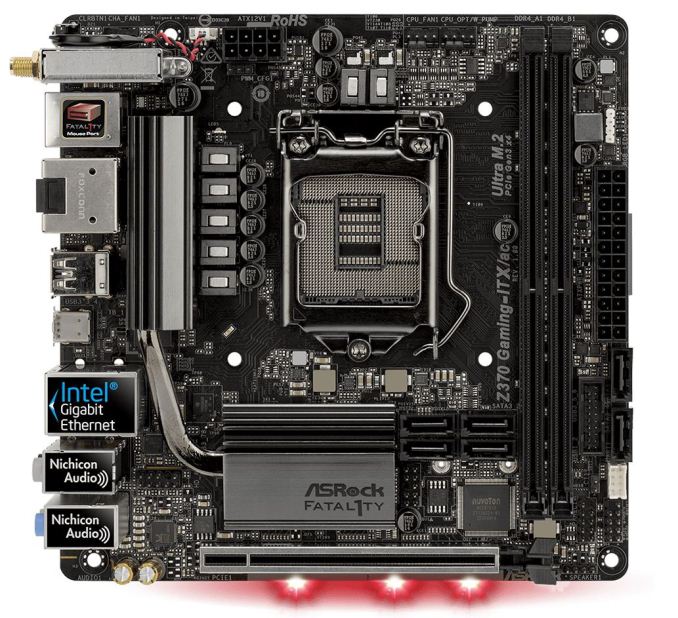
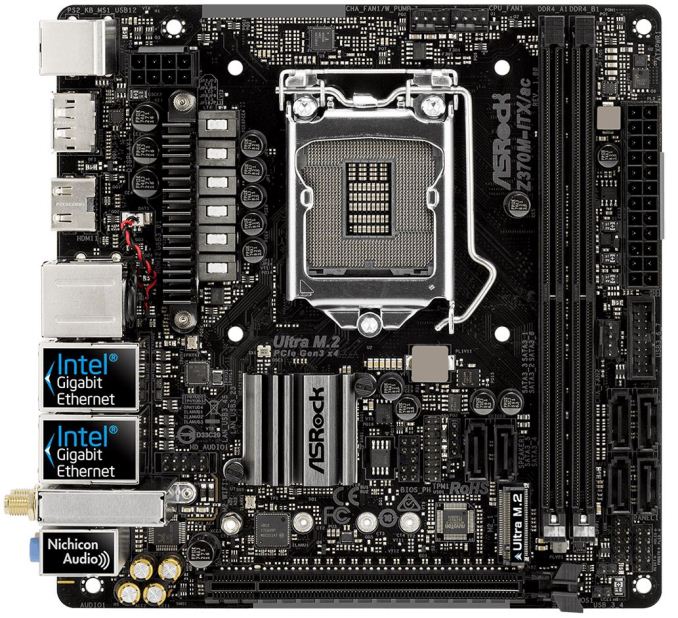
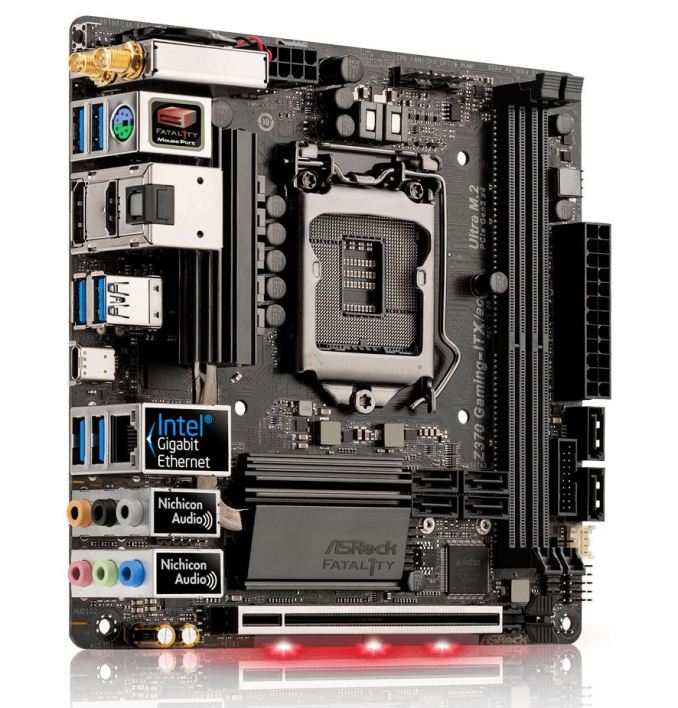
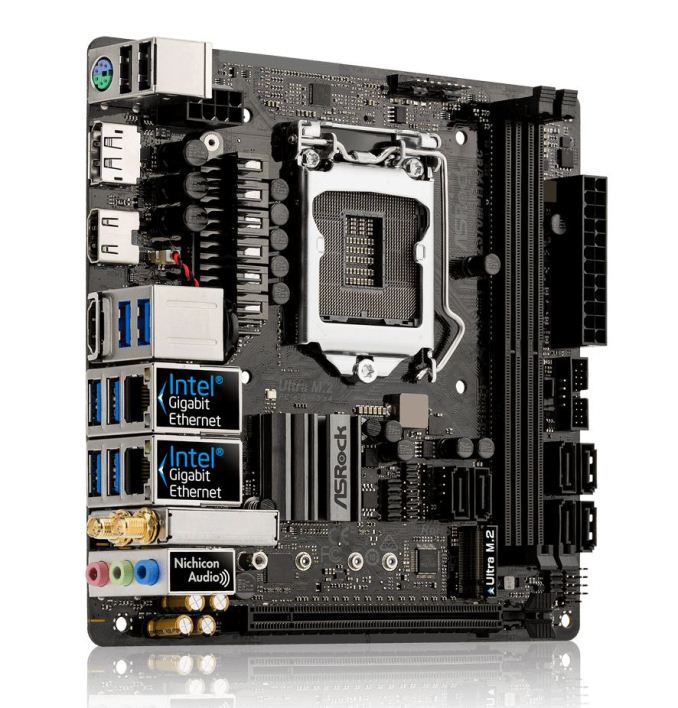
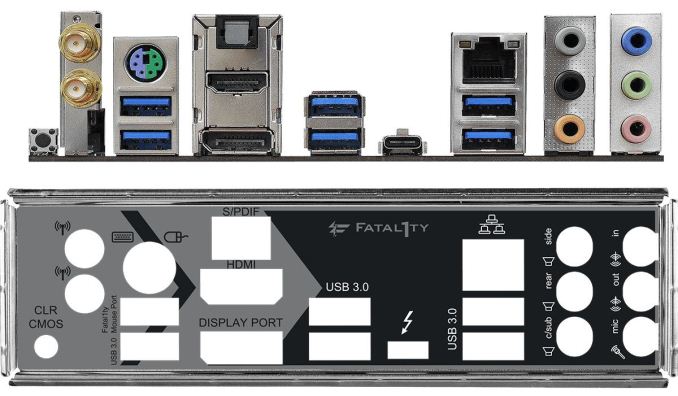









83 Comments
View All Comments
sor - Friday, October 20, 2017 - link
Damn. At least key it differently and call it LGA1151v2 or something.The changes are so minimal it really does seem like planned obsolescence. Does it really need more power pins to support new chips with the same power envelopes? Really? They couldn’t handle that on the CPU PCB?
KaarlisK - Saturday, October 21, 2017 - link
Actually it is ~1.5 times peak current with the same average power envelope, so yes, they need the change.If they had not brought the launch forward and just launched together with the cheap chipsets, there would be far less complaints.
sor - Saturday, October 21, 2017 - link
Where did you find information indicating current has increased 50%? I just spent about ten minutes trying to find a reference backing that up, perhaps something indicating the 8 series operates at a much lower voltage within same TDP, which would translate to higher current but they seem to operate in the same 1.2-1.3v range.You’re not just assuming they draw more current because they have two more cores, are you?
KaarlisK - Sunday, October 22, 2017 - link
Notice the difference between average and peak.And the information is in publicly available documents. I did not bother to look it up, but others have, for example: https://forum.beyond3d.com/threads/intel-coffee-la...
Crono - Saturday, October 21, 2017 - link
Nice roundup. That's a lot of motherboards to spec and summarize. I especially appreciate the handy chart at the end, it's a good, quick-and-dirty comparison tool.Landcross - Saturday, October 21, 2017 - link
You guys forgot 2 new Z370 boards from Supermicro :)https://motherboarddb.com/motherboards/?chipset=19...
Xpl1c1t - Sunday, October 22, 2017 - link
The mITX board looks incredible.+ Low ESR Tantalum capacitors! (first time seeing them on VRM duty on a mainboard)
+ HDMI 2.0
+ 2x M.2 Slots
+ USB 3.1 Type C
+ Optical SPDIF
- RGB.......
MadAd - Saturday, October 21, 2017 - link
Great write up but for me its just another depressing generation of oversized, overpriced ATX form factor offerings on which the vast majority of users wont even plug a second gpu into, with the smaller and more size appropriate FF represented as a minority afterthought.With all the progress of PCs since the 90s whod have thought that I could still use the same ATX case today while every single other component (from floppy drives to 2d Mattrox cards) have long gone to the recyclers. I find it so annoying how manufacturers have stuck on this prehistoric gargantuan case size with the other sizes being an afterthought. It feels like like stifled innovation while everything else is moving on.
rocky12345 - Saturday, October 21, 2017 - link
Great article and a lot of work put in to get it out for us to read thank you.My only issue is and it is nit your fault is why these companies feel the need to totally blanket the market with basically the same boards just a different model number and basically a few tiny changes and spray paint it a different color and use the word gaming and put something x or x1 or k,k3 etc etc. For crap sakes just release three models not 7-10 models of the same crap it is pretty much just greed I guess.
The whole market is like this now with anything computer related of and if it has the words GAMING or RGB in it's got to be good for sure. My fav is that gaming mouse pad next it will have RGB lighting in it...lol
CitizenZer0 - Wednesday, October 25, 2017 - link
Agreed